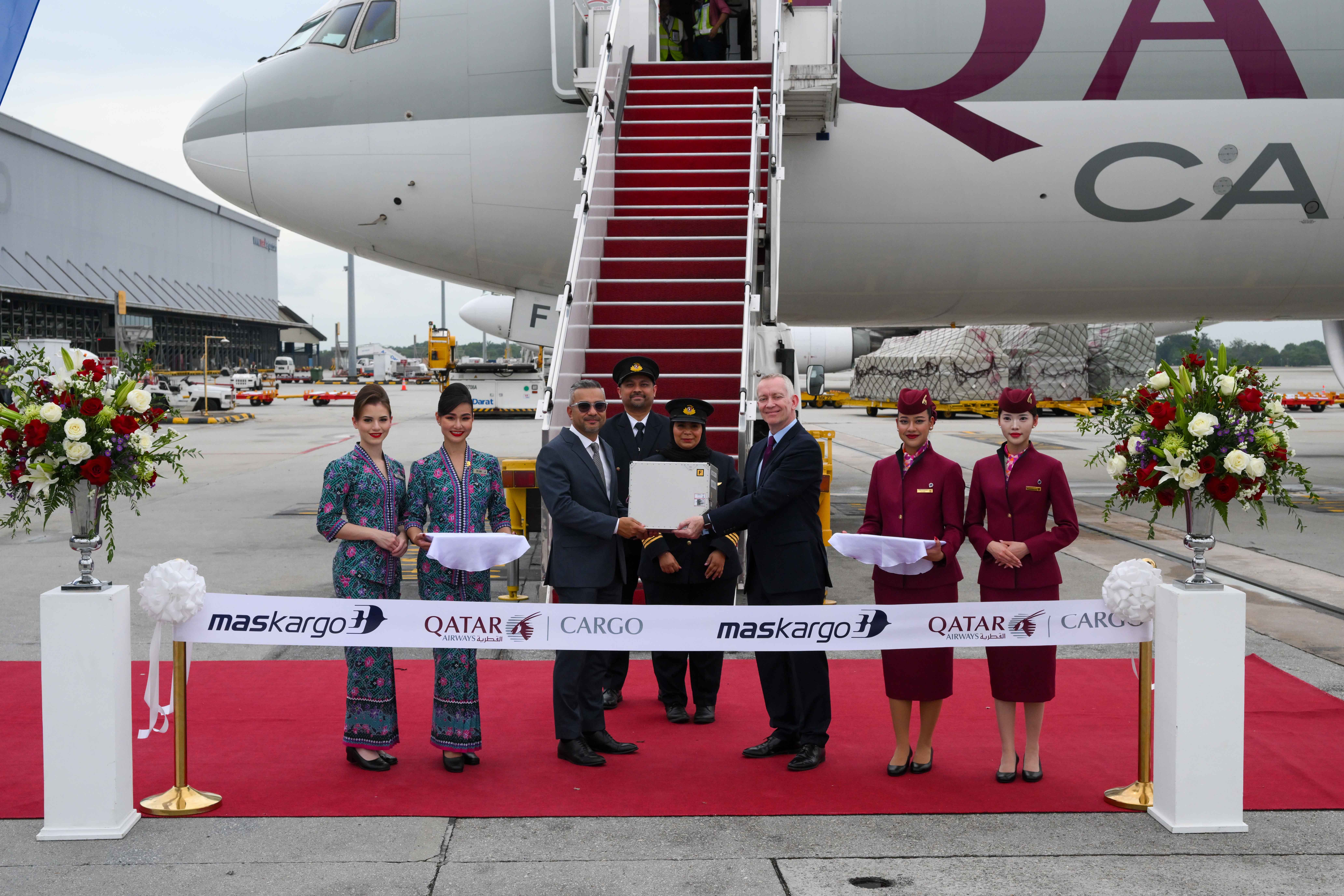
MASkargo will remain a maindeck player despite questions surrounding its future in light of Malaysia Airlines’ intensive restructuring across the whole group, according to its head of cargo.
Speaking to Payload Asia on the sidelines of the recent Air Cargo India event, Ahmad Luqman Mohd Azmi, chief executive of MASkargo emphasised the once leading cargo carrier will remain active in the cargo market, although with a slightly leaner freighter fleet.
This will see the cargo carrier – a division of Malaysia Airlines – shedding its B747-400Fs, but keeping its fleet of four A330-200Fs which, with their range and 65 tonnes capacity, make them ideal for the carrier’s intra-Asia ambitions.
“We will still continue to be the air cargo carrier for Malayasia with a focus on Southeast Asia, India, China and Japan,” Luqman said, adding that long-haul widebody freighter operations will be operated through “collaboration”.
“We will still operate B747 freighters, but not on our metal, that’s the sort of fleet synergy we are looking at. We believe in growing, not organically with our own metal, but through partnerships – that will be the new network philosophy for MASargo,” he said.
Luqman noted that MASkargo is “quite close” to inking a block space agreement (BSA) that will enable the carrier to continue serving the important Amsterdam market. The carrier pulled its B747-400F out of Frankfurt last year which left its only European service operating into Amsterdam Schiphol via Dubai.
“With this new partnership that we are going to announce soon, this carrier will operate that route for us, but we are buying the majority of the capacity on a block space basis. So as far as the customer is concerned the market reach remains the same.”
Although declining to name the carrier, industry insiders say Emirates is a likely possibility, as the Malaysia Airlines parent reached an agreement on the passenger side late last year and Emirates SkyCargo has a network and capacity to more than cover MASkargo’s long-haul needs.
Dealing with the deficit
The next issue to be solved with the imminent withdrawal of the B747-400F will be Australia, where it currently operates into Sydney. The solution, according to Luqman will be the same as Amsterdam, with discussions currently about 30-40 per cent complete with an unnamed partner. “But we still have a lower deck option out of Australia with which we can do a limited number of livestock with our A330 passenger aircraft.”

The last remaining problem that results from shedding the B747F is that of Mumbai. India is an important market for MASkargo, particularly with high-yield pharmaceutical traffic and while it continues to run its A330Fs into Chennai and Bangalore (as well as Dahka in neighbouring Bangladesh), it lacks capacity into the country’s commercial capital.
Compounding this was the rationalisation on the passenger side which saw the end of A330 passenger service, thereby removing 18-20 tonnes of belly capacity per flight.
“Pharma traffic used to be bigger when we flew the widebody out of Mumbai,” Luqman says. “That is why we need to solve that and we will have to recapture that market. What we do now is we truck the pharma to Bangalore and then uplift out of Bangalore –it’s not ideal, but we still maintain some market presence,” he added. This need will see a return to Mumbai utilsing A330F capacity, in the coming months.
“We will keep A330-200Fs, he emphasised, adding that two of four in the fleet are being utilised mainly in Southeast Asia, China, Japan and the Indian Subcontinent. One is currently on lease to Turkish Cargo and discussions are currently underway to lease the remaining A330.
This is a mid-term strategy Luqman notes, adding that the main focus for the entire group is to become profitable. “We are looking at consolidation this year because we do need to show the nation that we are as an airline, profitable.”
High utilisation
The two A330-200Fs that the carrier is currently flying are being extensively utilised as MASkargo, aside from the Indian Subcontinent, also plies them across the Southeast and Northeast Asian region, including: Jakarta, Ho Chi Minh and Hanoi in Vietnam, Manila, Hong Kong, Shanghai and Narita.
“These are all done using two aircraft. We used to do this with three, but what we have done this year is just increased the utilisation of the aircraft by taking one capacity out, so hopefully this will help,” he added in reference to group’s bid to shed the red ink.
Of its key markets, Luqman notes that the India market overall is doing well – in part because of the ‘Make in India’ campaign and also growing trade between India and China – and so too Vietnam which is experiencing a windfall as lower-end, labour-intensive manufacturing continues to migrate out of China.
Another adverse effect of the consolidation on the passenger side is the fact MASkargo’s belly capacity has been cut by nearly 20 per cent Luqman noted, but this looks set to recover as the cargo division is looking to emulate the partnership struck on the passenger side with Emirates, but on belly cargo.
“We hope that we can also emulate something similar on the lower deck as well, because Emirates is quite strong into points in Europe and right now with the partnership we have access to 30 markets out of Dubai. So we are hoping we can replicate that on the cargo side.”
Looking forward
Going forward Luqman says the ongoing restructuring will see a rebranding exercise with a launch on the passenger side in the first half of this year, followed later by the cargo division. “We intend to have a totally new way of doing things, new products, new offerings and only then will we launch the brand.”
This may prove a difficult year for a new start as Luqman anticipates the market will continue its downward trend over the first half of this year. “If any recovery happens I think it would be late Q3 and even for Q4 I think it will be selective market growth.” He adds that if the industry is lucky, it might eek out three per cent growth this year, a situation that he describes understatedly as, “a bit tough”.









